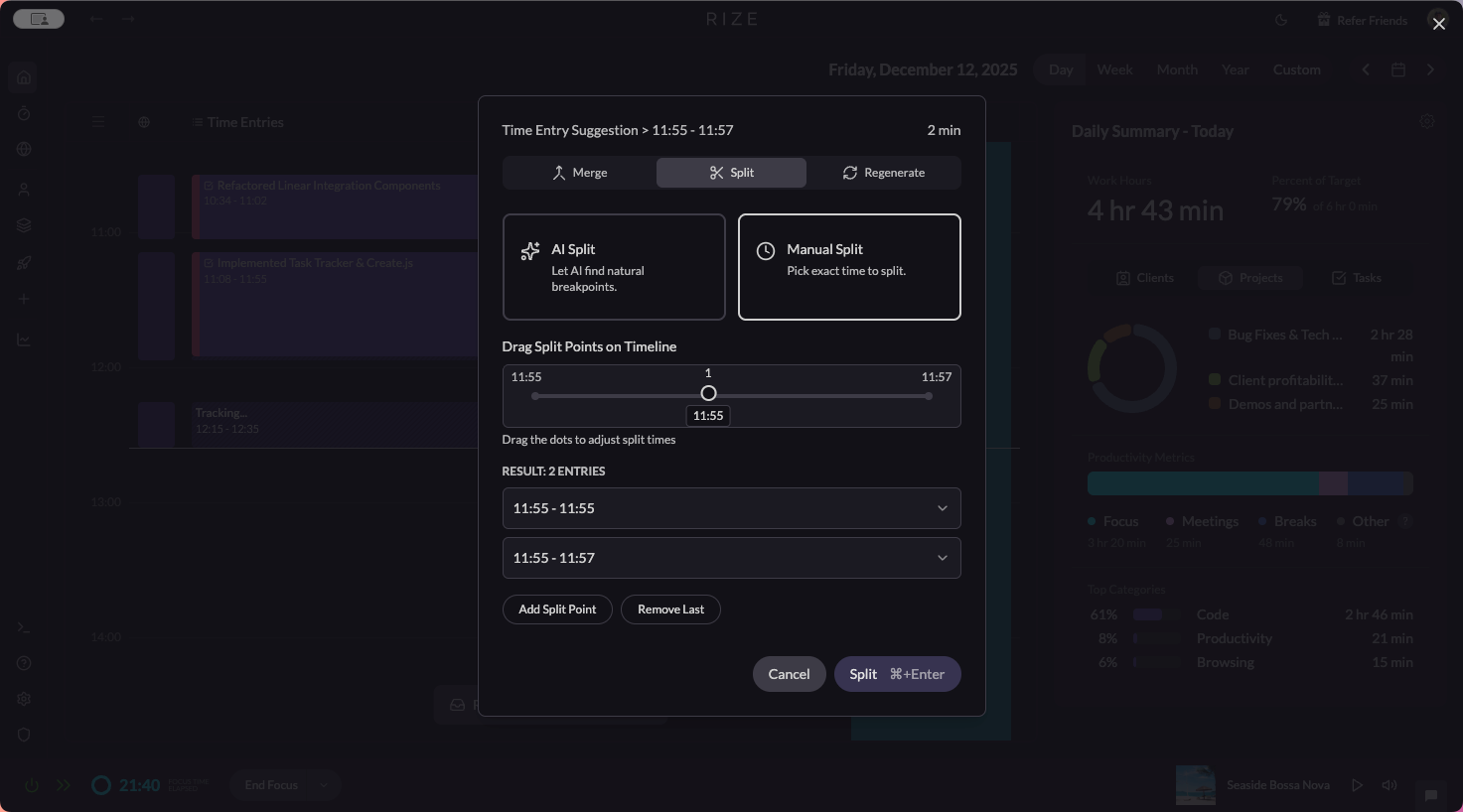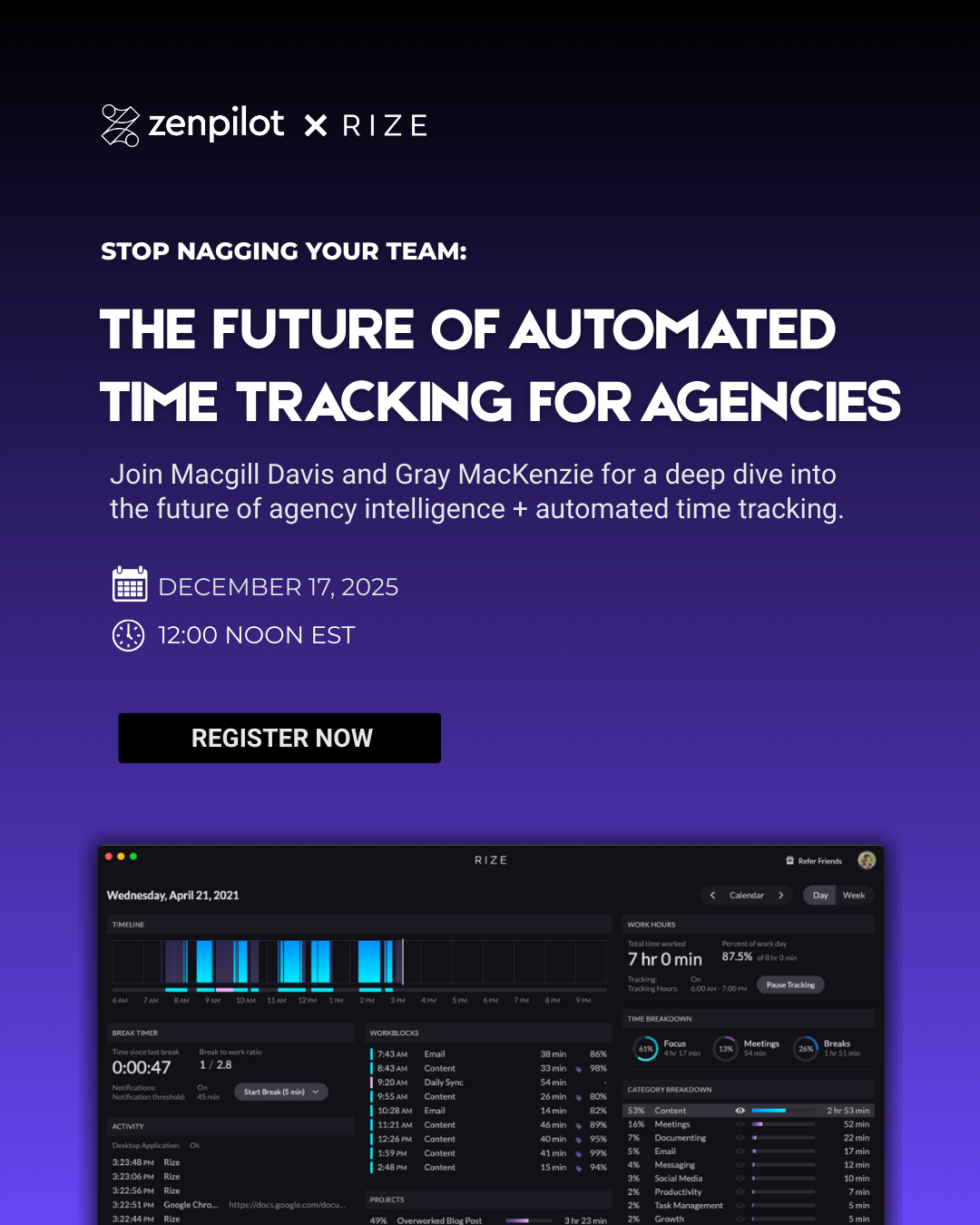We just hosted our first live “Mastering Rize 2.0” webinar – a deep dive into how to fully automate your time tracking, clean up your time entries, and get clear visibility into clients, projects, tasks, and teams.
This session walks through both sides of Rize:
- how you work (focus, meetings, breaks, work hours, nudges), and
- what you worked on (clients, projects, tasks, and billable time).
It’s perfect if you’re new to Rize 2.0, onboarding a team, or want to tighten up your workflows.
What you’ll learn in the webinar
- Rize 2.0 overview and philosophy
- Why we’re focused on fully automated time tracking
- The two pillars of Rize: productivity (how you work) and output (what you worked on)
- How Rize tracks your activity
- Mac & Windows apps tracking the active window only
- Privacy-first design: no screenshots, only metadata (app name, URL, window title)
- How raw activity turns into “Activity” blocks you can inspect and adjust
- Categories and productivity metrics
- How AI-powered categories are assigned and how to customize them
- What “focus”, “work”, “idle detection”, and “distraction blocker” flags do
- How these settings drive focus time, meeting time, and your session quality scores
- Time Entries and Time Entry Suggestions
- How Rize chunks your activity into suggested time entries
- AI-generated titles and descriptions that make your timeline readable
- Client / project / task suggestions powered by keywords and recent work
- Using the Review Time Entries Inbox to quickly “inbox zero” your time
- The new “minimum time entry minutes” setting to ignore tiny fragments
- Merging, splitting, and regenerating suggestions when you need more control
- Sessions: focus, meetings, and breaks
- Automatic detection of focus, meetings, and breaks from your activity
- Starting sessions with the focus timer and optional music
- Seeing top interrupters and getting distraction-blocker nudges when you drift
- How calendar events (Google & Outlook) create meeting sessions, including in-person meetings
- Work hours, PTO, and auto-tracking
- Setting work hour targets and getting overworking alerts
- How all-day “PTO/OOO” calendar events automatically mark PTO days
- Using the automatic tracking schedule vs tracking 24/7, and recommended setups
- Workspaces, clients, projects, and tasks
- How workspaces power team visibility and billing/profitability
- Setting up clients, projects, and tasks and how they relate
- Using keywords (including advanced keyword rules) to auto-tag work
- Member settings: hourly rate, cost rate, currency, and timezone
- How billing rates can come from clients, projects, or individual team members
- Client / project / task reports with CSV and PDF exports for client reporting
- ClickUp and Linear integrations
- Connecting ClickUp/Linear teams to Rize workspaces
- Mapping spaces/folders/lists into clients and projects in different configurations
- Why email matching matters for assigning tasks to the right person
- Two-way time sync with ClickUp (time entered in ClickUp or Rize stays in sync)
- Handling manual and offline time
- Best practices for adding offline meetings, calls, or non-computer work
- Drag-and-drop activity overrides + manual time entries
- Tips for remote desktop setups and where to install Rize
Roadmap sneak peek
At the end of the session, we also shared what’s coming next:
- More task-tool integrations (Notion, Asana, Monday, Jira, Microsoft, and more)
- Smarter auto-tagging and suggestions powered by upgraded GPT-5 models
- Automated workspace reports (daily/weekly/monthly summaries for you and your team)
If you’re looking to get more out of Rize 2.0, this webinar replay is the best place to see how all the pieces fit together in a real workflow.



